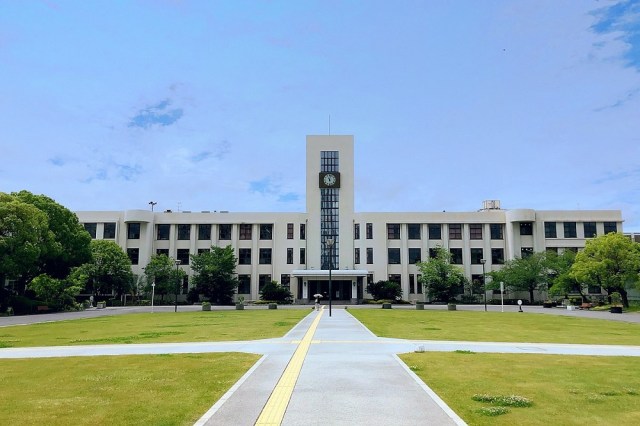
Says Japan will “continue to decline” without greater globalization.
Odds are that you assume, and correctly so, that Japanese universities generally conduct their lessons and other school business in Japanese. You may or may not also know that the Japanese academic year begins in April and ends in March, but that’s also the norm.
However, at least one of those aspects is going to be changing at Osaka Metropolitan University, and possibly the other one too.
The public university, which was established two years ago through a merger of Osaka City University and Osaka Prefecture University, has announced that it will be restructuring its academic year to begin in the fall and run until the following summer. This would align Osaka Metropolitan University’s schedule with academic institutions in the U.S., U.K., and Canada, as well as Vietnam and China, the two currently largest sources of working foreign residents in Japan. That alignment is no coincidence, as the expressly stated goal of shifting to a fall-to-summer academic year is to promote internationalization at Osaka Metropolitan University, allowing it to attract and coordinate with scholars from around the world in both domestic and overseas endeavors, particularly in making in easier for both OMU students to study overseas and for overseas students to study at OMU.
The shift will happen in stages, with the university’s undergraduate engineering department and certain graduate school programs making the transition in the fall of 2027. They’ll then be followed by other departments, with the plan being eventually for all students, regardless of whether or not they plan to participate in study abroad or other overseas educational activities, to begin their academic years in the fall.
Regarding the new policy, Hirofumi Yoshimura, the 48-year-old governor of Osaka Prefecture, said:
“I think there are national-level public universities that are also considering this change, but restrictions at the national level make it difficult to enact. It is also difficult for private universities to fully commit to this idea, but because Osaka Metropolitan University is administered by Osaka Prefecture, I would like for it to be a center of knowledge for Osaka. Moving forward, Osaka must become more international, and in the broader picture, so must Japan as a whole, and if they do not, they will continue to decline. They are actually in decline right now, as the world is growing.”
Shifting the academic year isn’t the only change that Yoshimura wants to see happen either. “In the future, the official language of the university should be switched to English,” he asserted, though no formal decision or timetable to do so appears to have been made at this point.
A greater connection to the global community, especially as Japan’s population declines, is in many ways a wise course to be taking. However, integrating Osaka Metropolitan University’s schedule to that of overseas societies comes with the risk of decoupling it from the rhythms of life for most of the rest of Japan. With students graduating from Japanese high schools in March, those entering OMU under the new schedule would have roughly a half-year with their studies on pause.
▼ “Oh no! Six months of no school? Whatever shall we do?”
Assuming that doesn’t cause a financial burden for their families, the students themselves might welcome a half-gap year, but there’s a potentially larger problem waiting for them when they graduate. In Japan, many workplaces, particularly larger and more prestigious companies and institutions, do a large portion of their hiring each year in a single batch, with new employees all starting at the same time in April, one month after graduation at universities, junior colleges, and trade schools. If OMU students are starting their academic year in the fall, though, they’ll ostensibly be graduating after this hiring season is over. That would mean students wanting to work at such organizations (which are the most plentiful source of jobs in Japan) would have to either convince employers to make special exceptions for them to start later in the year than other new hires, perhaps even re-running training programs just for them, or wait until the next spring before they start working, further delaying the start of their entry into adult society and achieving financial self-reliance.
▼ No school or job you have to go to becomes decidedly less fun once Mom and Dad stop paying for your fancy Frappuccinos.
Even for students on the fall-start schedule who are willing to wait until the next year’s hiring batch, there’s a potential interviewing issue. Japanese university students commonly interview for post-graduation jobs during their third year, once again with many companies holding orientation and interview sessions in clusters. Students who started in the fall instead of the spring would either be half a year behind in their studies compared to the applicants they’re competing with, putting them at a disadvantage, or they’d be half a year ahead, a competitive advantage, but with the added risk of being closer to their graduation date and having less time to weigh their options and search for the job that’s the best fit for them.
Both Osaka City and Osaka Prefecture are planning to organize investigative boards to discuss these potential pitfalls, but as of yet have not made any concrete comments regarding how they plan to address them.
Source: Kansai TV News via Yahoo! Japan News
Top image: Wikipedia/KishujiRapid
Insert images: Wikipedia/W7401898, Pakutaso (1, 2)
● Want to hear about SoraNews24’s latest articles as soon as they’re published? Follow us on Facebook and Twitter!